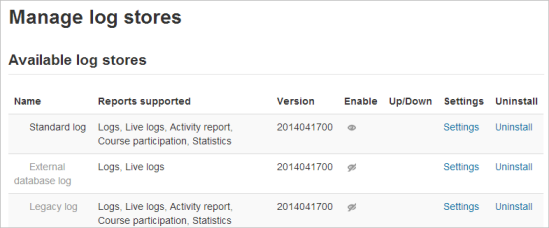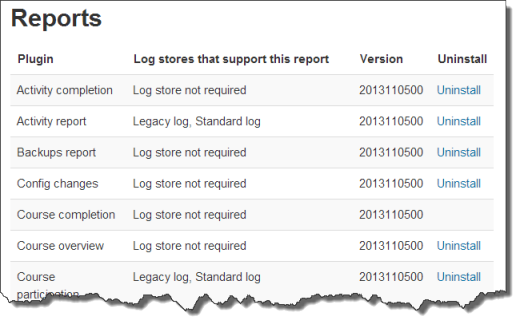Logging
The site administrator can define which log stores are available, and in which order, from Administration>Site administration>Plugins>Logging>Manage log stores.
Available stores are: Standard, Legacy and External database.
Note: A new Moodle site will have Standard logging enabled and Legacy logging disabled. A site which has been upgraded will have both enabled.
The default Standard log is very detailed and should meet most requirements. The Legacy log should be disabled unless you have old custom reports that need it. An External database log store also allows you to connect to an external log database.
Note that if you disable Legacy logs, you won't be able to look/show/display (existing) Legacy logs, and no new Legacy logs will be generated. This could be a problem for non -standard plugins which still generate Legacy logs instead of Standard logs. In time it is to be hoped all contributed plugins will use Standard logs. You can disable the legacy store plugin completely OR you can only disable writing to legacy log inside the plugin settings. In the second case, you will be able to read from the log but no new entries will be added. This is also what will be set automatically during upgrade.
The "Write buffer size" is the number of log entries inserted in one batch database operation, which improves performance.
From Site administration>Plugins>Reports>Manage reports, the administrator can see which log stores support which given report:
External log stores (logstore_database)
An External database log store also allows you to connect to an external log database.
This log storage plugin is responsible for storing and retrieving the logs (steps 2 and 3 from Figure 1). There is no interface to read or display from it provided with Moodle core.

